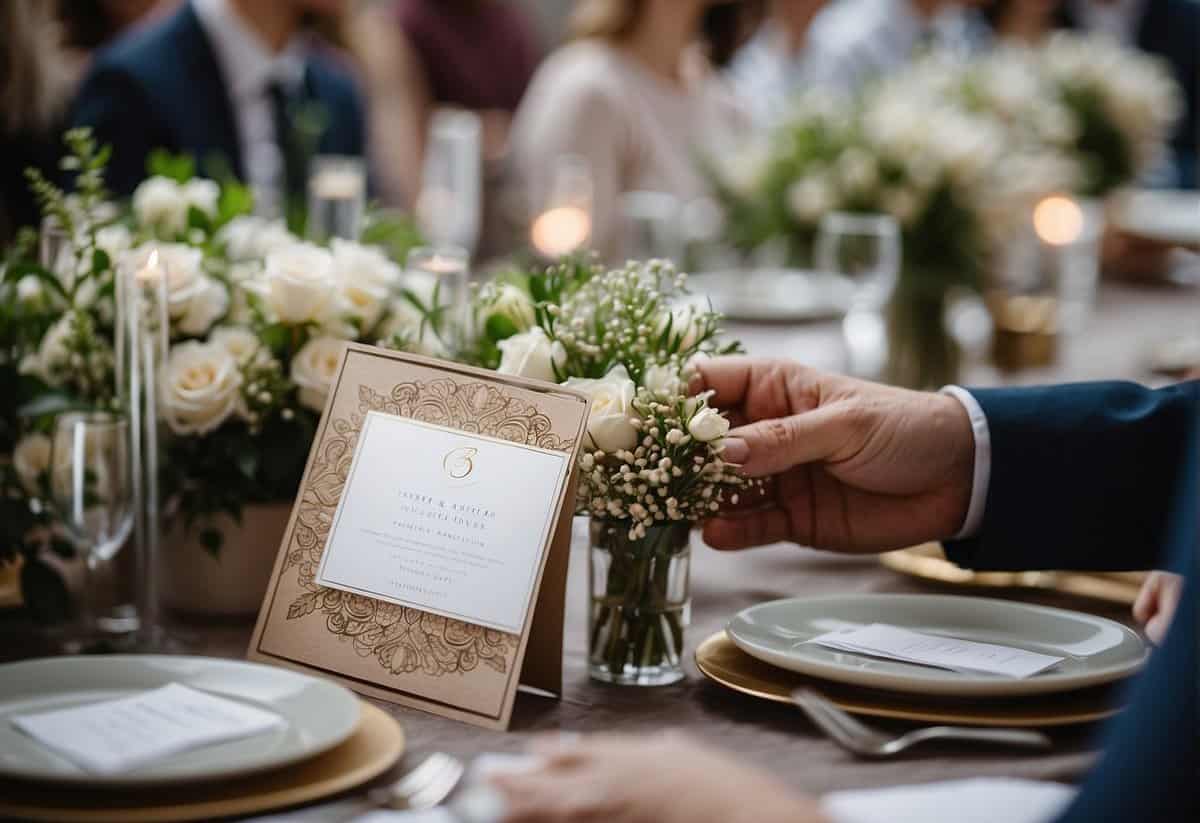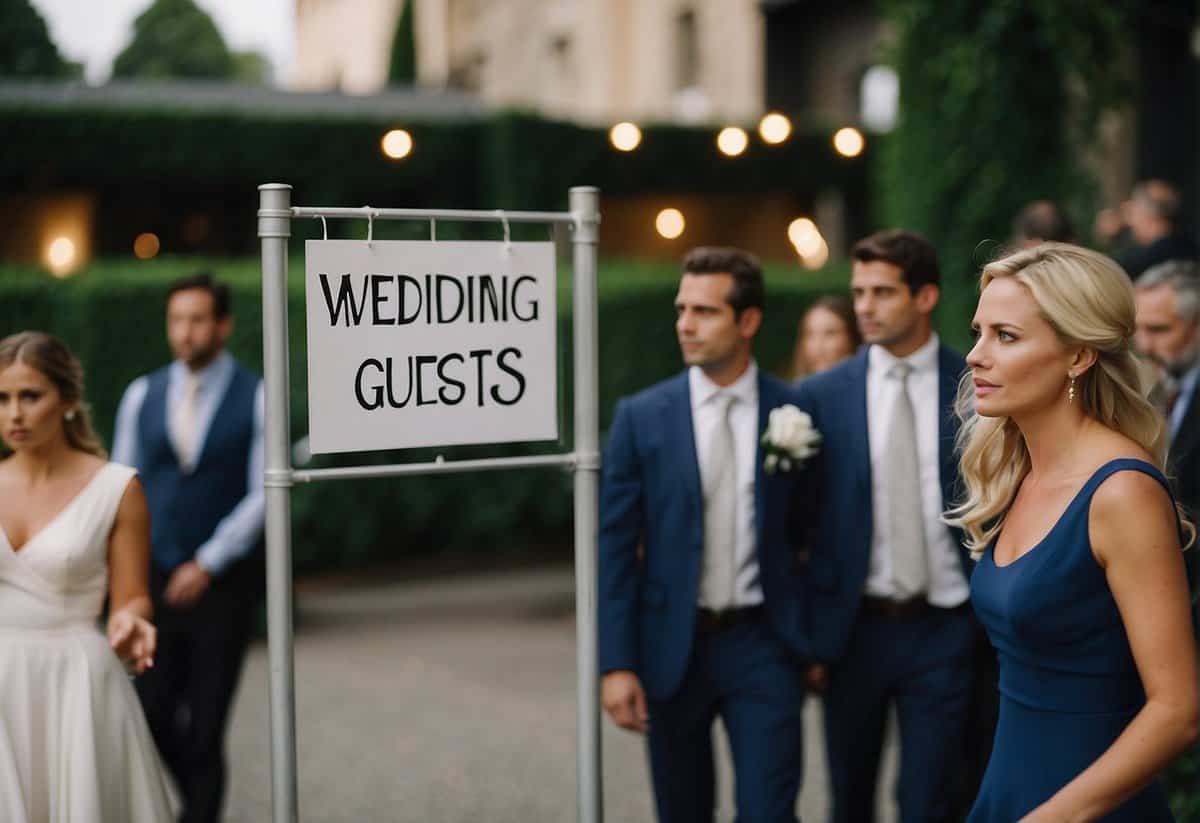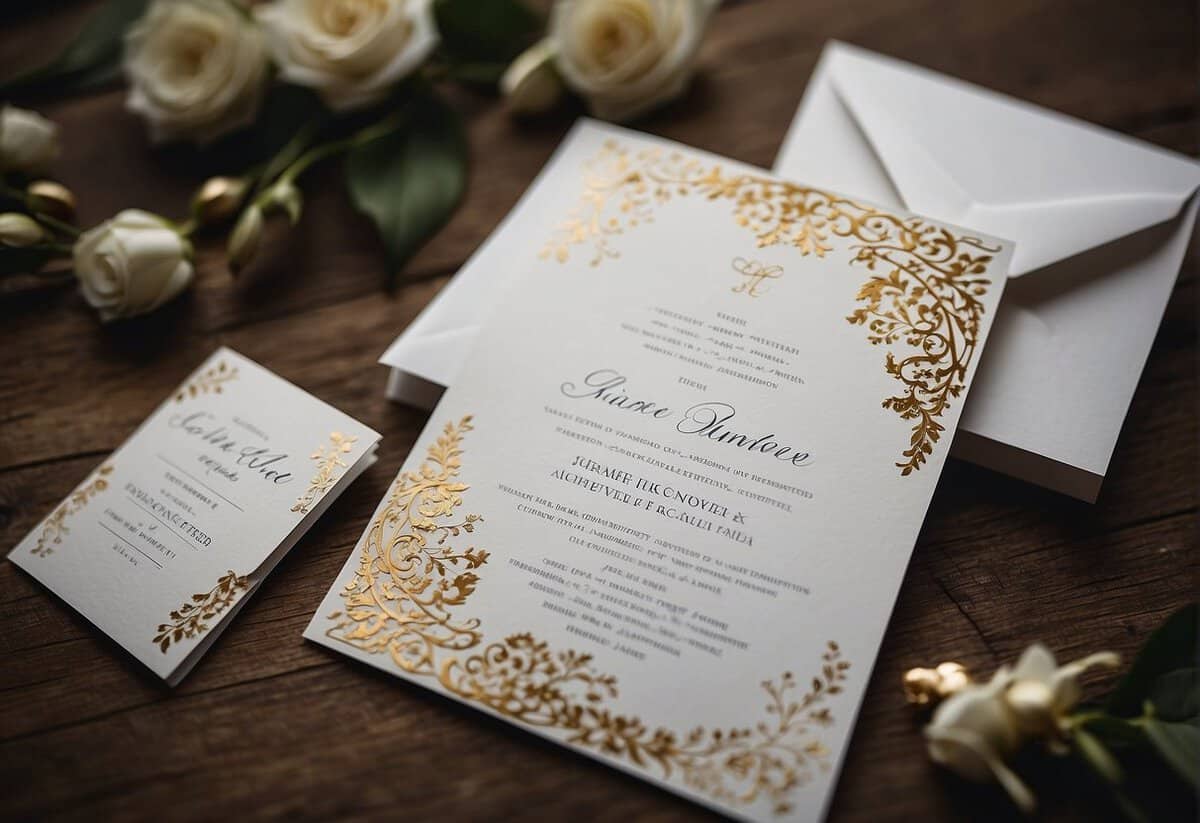Is It Rude to Invite People to the Wedding but Not the Reception? Understanding Wedding Etiquette
When planning your wedding, one of the crucial considerations is the invitation list. Deciding who gets an invite to the ceremony, reception, or both can be a delicate matter. There’s a growing debate around whether it’s acceptable to invite guests to the wedding ceremony but not the reception. While some argue that economic or venue constraints make this a viable option, others feel that it can come across as inconsiderate.

Navigating wedding etiquette is no small feat, especially when you’re trying to balance a budget with the desire to include as many loved ones as possible. It’s worth keeping in mind the message you’re sending with your invites. Guest feelings, societal norms, and personal circumstances all play a part in this decision. Finding a way to manage your guest list respectfully ensures that your special day remains joyous for everyone involved.
Key Takeaways
- Wedding invitation etiquette is complex, especially regarding who is included for the ceremony and reception.
- Consider guests’ feelings and clear communication to avoid misunderstandings.
- Explore alternatives to manage your guest list within the constraints of your wedding.
Understanding Wedding Invitations and Etiquette

Navigating wedding invitations can be tricky because they’re not just about informing your guests—they’re a reflection of etiquette and tradition. By understanding the basics of wedding etiquette and the different ways people celebrate, you ensure that your guests feel honored and respected.
The Basics of Wedding Etiquette
When it comes to wedding invitations, there are a few golden rules you should adhere to:
- RSVP: Always make it clear how and by when guests should respond, as this helps with planning and is considered polite.
- Wording: Be meticulous with your invitation wording to properly convey the nature of the event and to avoid any confusion.
For example, if you’re planning separate events for the wedding ceremony and reception, it’s crucial to communicate this clearly. In situations where you’re having a smaller ceremony but a larger reception, tailor your invitations accordingly. For instance, Martha Stewart recommends wording reception-only invitations in a way that indicates the couple is already married: “Amber Davis and Peter Moore request the pleasure of your company at their wedding reception to celebrate their marriage…”
Remember, following these guidelines isn’t about adhering to stuffy rules; it’s about showing respect and consideration for your guests’ time and expectations.
Variations in Wedding Celebrations
Weddings are personal, and as such, celebrations can vary widely. It’s important to honor your vision while also considering guests’ feelings. Some celebrate with a big ceremony attended by all, followed by a curated reception. Others might opt for a more intimate ceremony with a large reception.
It’s understandable to have different guests lists for each, but approach this with care. For instance, on WeddingWire, opinions on inviting different guests to the ceremony and reception are mixed, which highlights that the approach can be sensitive for some. While tradition typically does not favor inviting guests only to the reception, modern weddings are changing, and the decision ultimately rests with what makes sense for your special day.
Your invitations should reflect the type of celebration you’re planning. If you’re not inviting everyone to the ceremony, that should be clear yet courteously communicated on the invitation. Transparency and gracious wording can minimize hurt feelings and set the tone for a joyous celebration for all involved.
Invitation Structure and Guest Considerations

When planning your wedding, you’ll need to decide how to structure your invitations. You’ll want to make sure your guests understand which part of the celebration they’re being invited to.
Separating Ceremony and Reception
Invitations traditionally announce the joyous union of a couple, so it’s essential to convey clearly which events guests are invited to. Consider using distinct cards: one for the ceremony and another for the reception. This method helps avoid any misunderstanding and makes it evident if some guests are only invited to one part of the celebration. For example, guests invited to both the ceremony and reception get both cards; reception-only guests receive just the reception card. It has been argued that inviting people to only the reception can be perceived as inconsiderate, as it may imply that their presence at the ceremony is not as valued.
Guest List Management
Managing your guest list can be a delicate balancing act, especially if you’re aiming for an intimate wedding. You may have limited space at the ceremony venue, so you might need to prioritize family and close friends for that part of the day. Ensure transparency with your guests about the celebration’s scope and whom you can accommodate where. Being straightforward helps set expectations and can mitigate feelings of being placed on a so-called ‘B-list’. Remember, every person you invite should feel welcomed and valued, whether they’re joining for the vows, the dance floor, or both.
Addressing Common Concerns

When planning your wedding, it’s essential to handle invitations with care to avoid any misunderstandings or hurt feelings. Here’s how to navigate the concerns that come with splitting guest lists between the ceremony and the reception.
Handling Potential Misunderstandings
Be Proactive: Begin by recognizing that feelings might be bruised if guests are invited to only one part of your special day. To preempt any hard feelings, be upfront about your reasons, whether it’s due to venue limitations or budget constraints.
Remember, being courteous goes a long way. Consider a personal approach, perhaps explaining your decision in a face-to-face discussion or through a heartfelt note.
Ensuring Clear Communication
Be Specific: Your invitations should make it crystal clear who is invited to what. For instance, if some guests are to attend the reception only, this needs to be communicated effectively to prevent confusion.
For example, you might word your invites to convey warmth yet be specific, such as “We’re thrilled to invite you to celebrate our marriage at the reception…”
Utilize language that shows you value their presence, which can help in making the situation feel more acceptable and less likely to be perceived as rude.
Alternatives and Solutions

When planning your wedding, it’s essential to create a guest experience that feels inclusive and considerate. Here are strategies to navigate your budget constraints and space limitations while still honoring and thanking your guests.
When to Consider Other Options
If your wedding venue is small but you wish to avoid offending guests by excluding them from the reception, it’s time to think creatively. For instance, a small ceremony with immediate family followed by a larger reception can be an elegant compromise.
- Budget Limitations: If costs are an issue, consider trimming other areas like décor or opting for a less expensive meal option.
- Thank You Gestures: Always send a thoughtful gift or a personalized thank you note to express your appreciation to the ceremony-only guests for their presence.
Creative Ways to Celebrate Without Offense
Tailoring your celebration to include all guests without breaking the bank requires some ingenuity.
- Multiple Events: Host a separate dinner or cocktail event for those not attending the main reception.
- Livestreaming: Offer a live broadcast of the reception festivities for those who cannot attend in person, making sure to give a shout-out to them.
- Staggered Invitations: If opting for a more intimate reception, you could invite additional guests to join later in the evening for dancing and desserts. This allows you to manage your budget while still celebrating with a wider circle.
Frequently Asked Questions

When planning your wedding, navigating the etiquette surrounding your invitations, particularly when it comes to the distinct parts of the event, can be challenging. These FAQs aim to clear up any confusion.
What is the proper etiquette for inviting guests to the wedding ceremony but not the reception?
Proper etiquette suggests that all guests invited to your wedding ceremony should also be invited to the reception. It’s important to consider how guests might feel being part of one but not the other.
How do you word a wedding invitation that includes a ceremony but excludes the reception?
Invitations should be clear and courteous. If your wedding plans do include separate invitations for the ceremony and reception, wording such as “Please join us for the ceremony” can indicate the specific nature of the invitation.
Is it considered impolite to host a wedding without a reception?
Not necessarily. Some couples opt for a small or private ceremony with no reception due to various reasons such as budget, venue capacity, or personal preference. Communication is key to ensure guests understand and respect your decision.
How should one address guests not being invited to the reception in the invitation?
Address this situation with tact and transparency. You could explain that due to limited space or budget constraints, the reception will be a smaller, more intimate gathering.
In terms of wedding etiquette, should the entire guest list be invited to both the ceremony and reception?
Traditionally, it is expected that anyone invited to the ceremony is also included in the reception. This avoids any feelings of exclusion or ranking among guests.
How can one graciously inform guests that there won’t be a reception following the wedding ceremony?
If you’re choosing not to have a reception, inform guests within the ceremony invitation. A simple statement such as “We have chosen to forego a traditional reception…” can be polite and informative.

